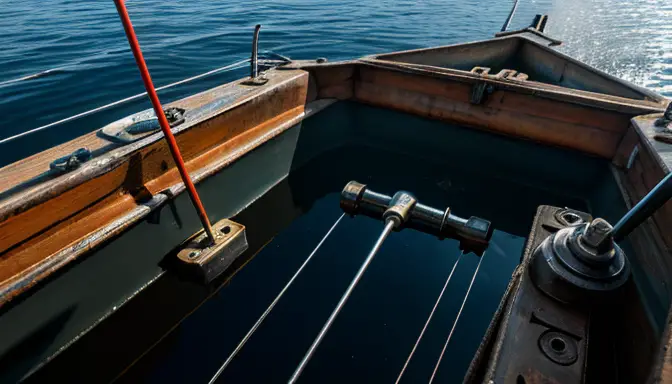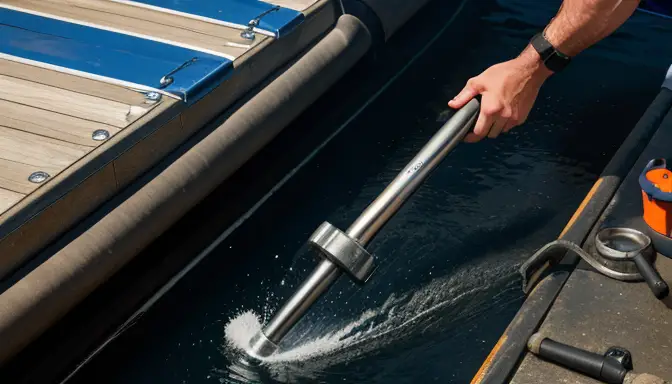Addressing leaks from a dripless shaft seal is crucial to maintaining the efficiency and integrity of marine vessels and industrial machinery. Understanding the components and function of dripless shaft seals is the first step in preventing leaks. Common causes of leaks must be identified and resolved promptly to avoid costly damages. Regular maintenance practices, such as checking for wear and tear, can significantly extend the lifespan of the seal. When worn components are detected, timely replacement is essential to prevent leaks. Professional inspection services can provide expert diagnosis and solutions for leak issues. Developing emergency leak response protocols ensures quick and effective actions in case of sudden leaks. Upgrading to advanced seal technologies can offer enhanced performance and reliability. Lastly, considering the environmental impact and compliance with regulations is crucial in containing and cleaning up leaks effectively.
Understanding Dripless Shaft Seals
When it comes to understanding dripless shaft seals, it’s essential to delve into their intricate design and functionality. These seals play a critical role in both marine vessels and industrial machinery, preventing water from entering the vessel through the propeller shaft opening. By utilizing advanced sealing technologies, dripless shaft seals offer a more efficient and environmentally friendly alternative to traditional stuffing box seals.
Let’s break down the key components of dripless shaft seals:
- Primary Seal: This is the main sealing element that prevents water from entering the vessel.
- Secondary Seal: In case of any failure in the primary seal, the secondary seal acts as a backup to maintain the seal integrity.
- Bearing Carrier: Supports the shaft and houses the seals, ensuring proper alignment and functionality.
By grasping the inner workings of dripless shaft seals, you can appreciate their importance in maintaining a watertight seal and preventing leaks that could lead to costly damages.

Common Causes of Leaks
Leaking from a dripless shaft seal can be a frustrating issue for marine vessel and industrial machinery owners. Understanding the common causes of leaks is crucial to prevent potential damage and ensure smooth operations. Several factors can contribute to leaks in dripless shaft seals:
- Worn or Damaged Components: Over time, the components of a dripless shaft seal can wear out or become damaged, leading to leaks.
- Improper Installation: Incorrect installation of the seal can create gaps or misalignments, causing leaks to occur.
- High Operating Temperatures: Excessive heat can impact the integrity of the seal material, resulting in leaks.
- Corrosion and Rust: Exposure to saltwater or corrosive environments can accelerate the deterioration of the seal, leading to leaks.
By addressing these common causes proactively through regular maintenance and inspections, owners can mitigate the risk of leaks and ensure the longevity of their dripless shaft seals.
Regular Maintenance Practices
Regular maintenance practices are crucial to ensure the longevity and efficiency of dripless shaft seals. By following a proactive maintenance schedule, you can prevent potential leaks and malfunctions that may arise over time. Here are some essential maintenance tasks to keep your dripless shaft seal in optimal condition:
- Regularly inspect the seal for any signs of wear, corrosion, or damage.
- Check the alignment of the shaft to prevent excessive friction that could lead to leaks.
- Monitor the seal’s temperature during operation to detect any abnormal heat buildup.
- Grease or lubricate the seal as recommended by the manufacturer to maintain proper sealing properties.
- Replace the O-rings and seals at recommended intervals to prevent leakage.
By incorporating these maintenance practices into your routine, you can ensure that your dripless shaft seal operates smoothly and effectively, minimizing the risk of leaks and unexpected failures.

Replacing Worn Components
When it comes to of a dripless shaft seal, it is crucial to understand the signs that indicate the need for replacement. Worn components can lead to leaks and compromise the efficiency of the seal. To determine when replacement is necessary, consider the following guidelines:
- Inspect Regularly: Regular inspections of the shaft seal can help identify any signs of wear or damage on components such as O-rings, bearings, or seals.
- Monitor Performance: Keep track of the seal’s performance and look out for any unusual vibrations, increased temperature, or water ingress, which could indicate worn parts.
- Consult Manufacturer Guidelines: Refer to the manufacturer’s recommendations for the lifespan of different components and replace them accordingly to prevent leaks.
By proactively replacing worn components based on these indicators, you can ensure the longevity and effectiveness of your dripless shaft seal, minimizing the risk of leaks and potential damage to your machinery or vessel.
Professional Inspection Services
Professional inspection services play a crucial role in maintaining the integrity and efficiency of dripless shaft seals. By entrusting the inspection to experts, you ensure that any potential leaks or issues are identified promptly and accurately. These professionals have the knowledge and tools to conduct thorough assessments and recommend appropriate solutions. Here are some key aspects of professional inspection services for dripless shaft seals:
- Utilization of specialized equipment for detailed examinations
- Expertise in detecting early signs of wear or damage
- Recommendations for preventive maintenance measures
- Timely response to emergent issues to prevent major failures
By engaging professional inspection services, you not only safeguard your equipment but also ensure optimal performance and longevity of dripless shaft seals, ultimately saving time and costs in the long run.

Emergency Leak Response Protocols
When a sudden leak occurs from a dripless shaft seal, having effective emergency response protocols in place is crucial to prevent further damage and ensure the safety of the vessel or machinery. Here are some key steps to consider:
- Immediate Assessment: Upon noticing a leak, quickly assess the severity and location of the leak to determine the appropriate response.
- Isolation: If possible, isolate the affected area to contain the leak and prevent it from spreading to other parts of the system.
- Emergency Shutdown: Safely shut down the equipment to stop the operation and minimize the risk of additional leaks or damage.
- Notify Authorities: Inform relevant personnel or authorities about the leak and follow any established reporting procedures.
- Implement Containment Measures: Deploy appropriate containment measures such as absorbent materials or barriers to limit the spread of leaked fluids.
- Emergency Repair: If feasible, perform temporary emergency repairs to stop the leak until a permanent solution can be implemented.
Upgrading to Advanced Seal Technologies
When it comes to upgrading to advanced seal technologies for your dripless shaft seals, you are investing in the future reliability and performance of your machinery. These advanced seals offer enhanced features and capabilities that can significantly improve the efficiency and durability of your equipment. Here are some key points to consider when upgrading:
- Enhanced Seal Materials: Advanced seal technologies often utilize high-quality materials that are more resistant to wear and tear, increasing the longevity of the seals.
- Improved Seal Designs: Upgrading allows you to benefit from innovative seal designs that provide better sealing performance and reduce the risk of leaks.
- Seal Compatibility: Ensure that the advanced seal technologies you choose are compatible with your existing equipment to avoid any compatibility issues.
- Increased Efficiency: Advanced seals can improve the overall efficiency of your machinery, leading to cost savings and improved productivity.
By upgrading to advanced seal technologies, you are taking proactive steps to prevent leaks and enhance the reliability of your dripless shaft seals, ultimately ensuring smooth operations and minimizing downtime.

Environmental Impact and Compliance
When it comes to the environmental impact of leaks from dripless shaft seals, the consequences can be significant. These leaks can introduce harmful substances into the water, posing a threat to marine life and ecosystems. It is crucial for industries using such seals to prioritize environmental compliance and take proactive measures to prevent leaks.
One way to address environmental concerns is by implementing proper containment and cleanup protocols in the event of a leak. Having a well-defined response plan can minimize the spread of pollutants and mitigate the damage caused by the leak. Additionally, regular monitoring and inspection of dripless shaft seals can help detect potential issues early on, reducing the risk of leaks and environmental harm.
Compliance with environmental regulations is not just a legal requirement but also a moral obligation to protect the planet. By investing in eco-friendly practices and technologies, industries can minimize their environmental footprint and contribute to sustainable operations.
Frequently Asked Questions
- What are dripless shaft seals?
Dripless shaft seals are innovative sealing devices used in marine vessels and industrial machinery to prevent water from entering the system without the need for constant lubrication.
- How do I know if my dripless shaft seal is leaking?
Signs of a leaking dripless shaft seal include increased water intake, unusual noise or vibration, and visible water around the seal area. Regular inspection is crucial to detect leaks early.
- Can I replace components of a dripless shaft seal myself?
While some maintenance tasks can be done by boat owners or operators, it is recommended to consult with a professional technician for replacing worn components of a dripless shaft seal to ensure proper installation and performance.
- Are there environmental concerns related to leaks from dripless shaft seals?
Yes, leaks from dripless shaft seals can have environmental impacts, especially in marine environments. It is important to follow regulations for containment and cleanup to minimize harm to the ecosystem.
- What Happened to Bluewater Yachts? The Inside Story - May 31, 2024
- Upgrade Your Boat’s Water Pump to the Mach 5 - May 30, 2024
- Upgrade Your Boat with the Big Stuff Stuffing Box - May 30, 2024


